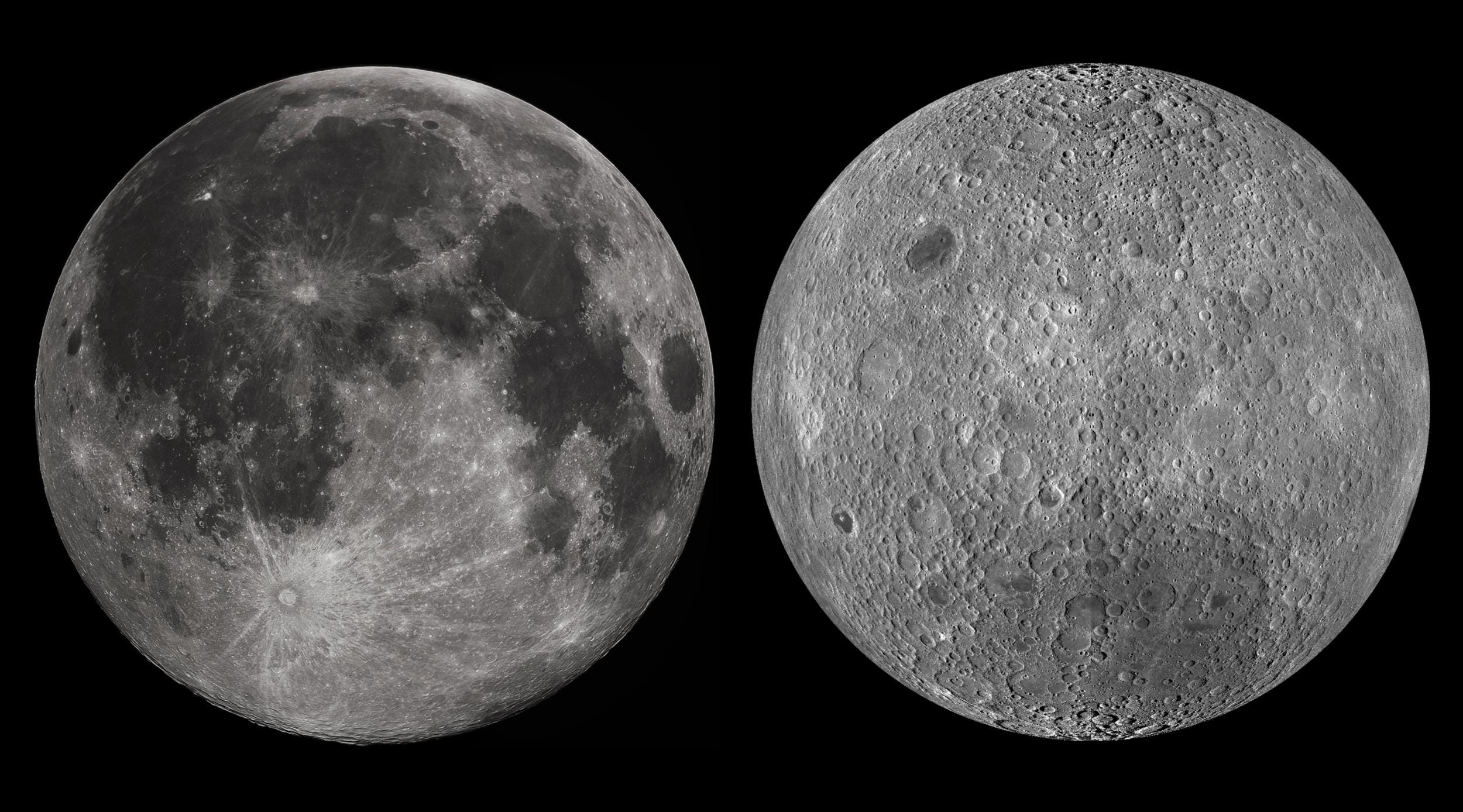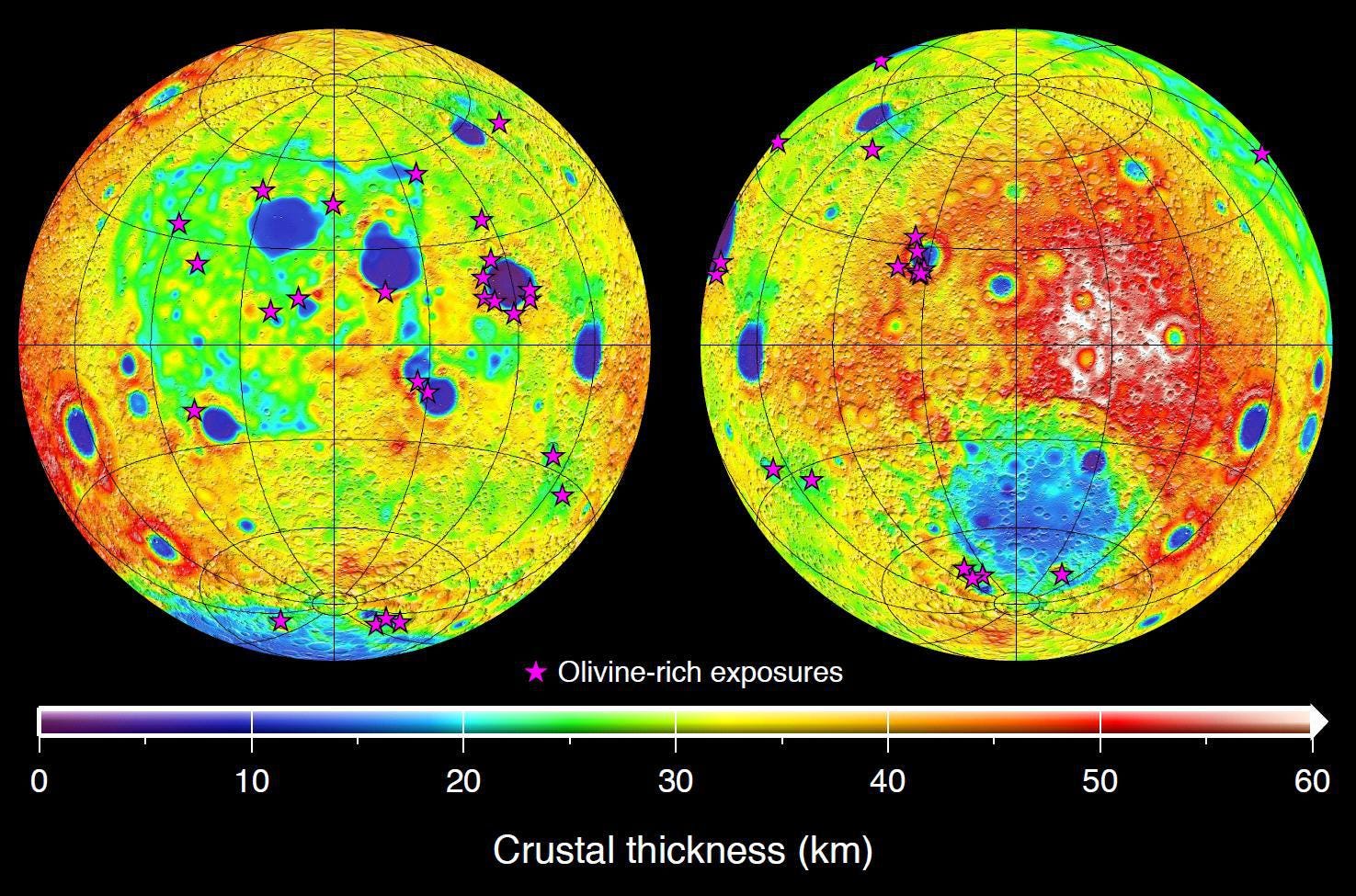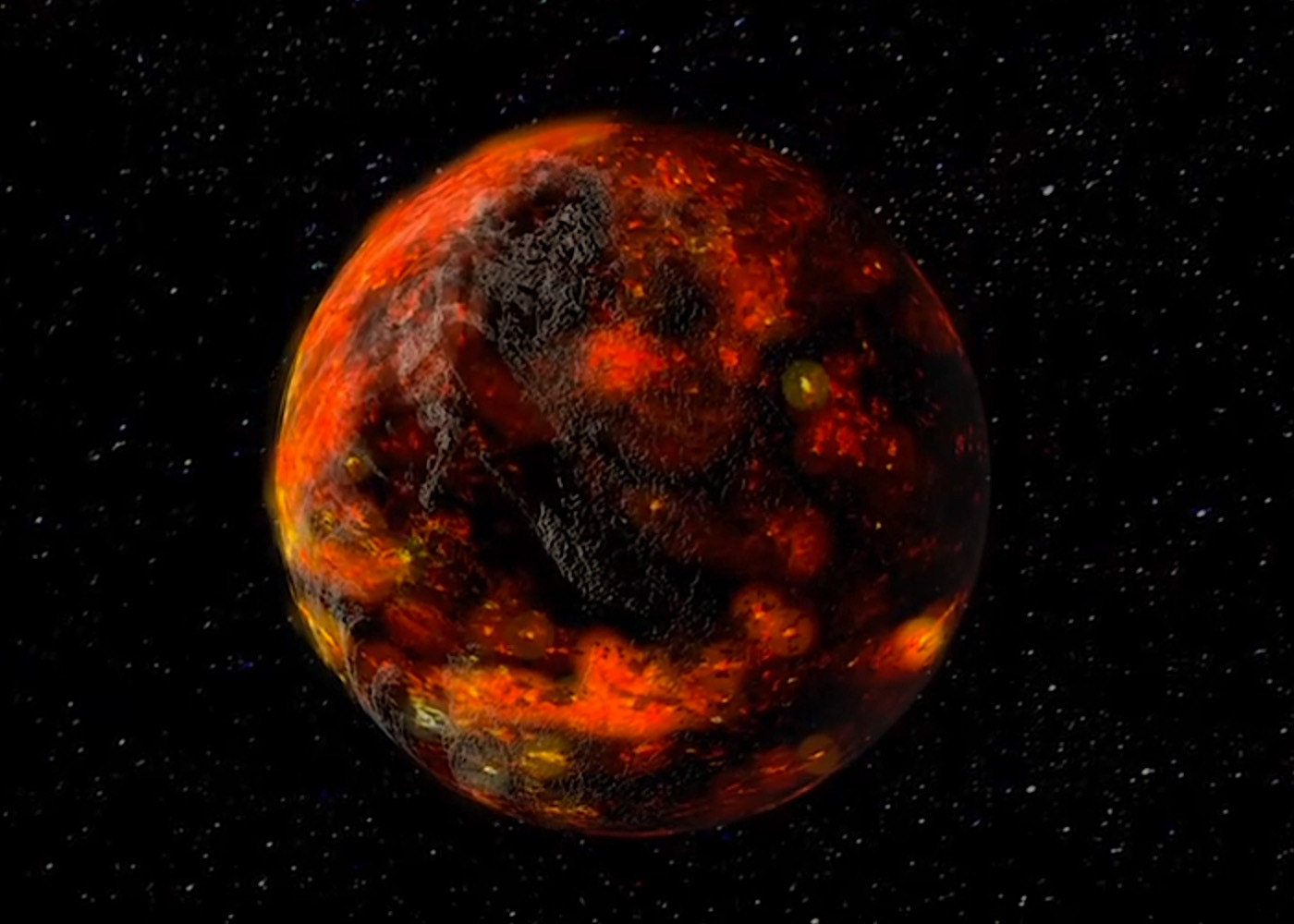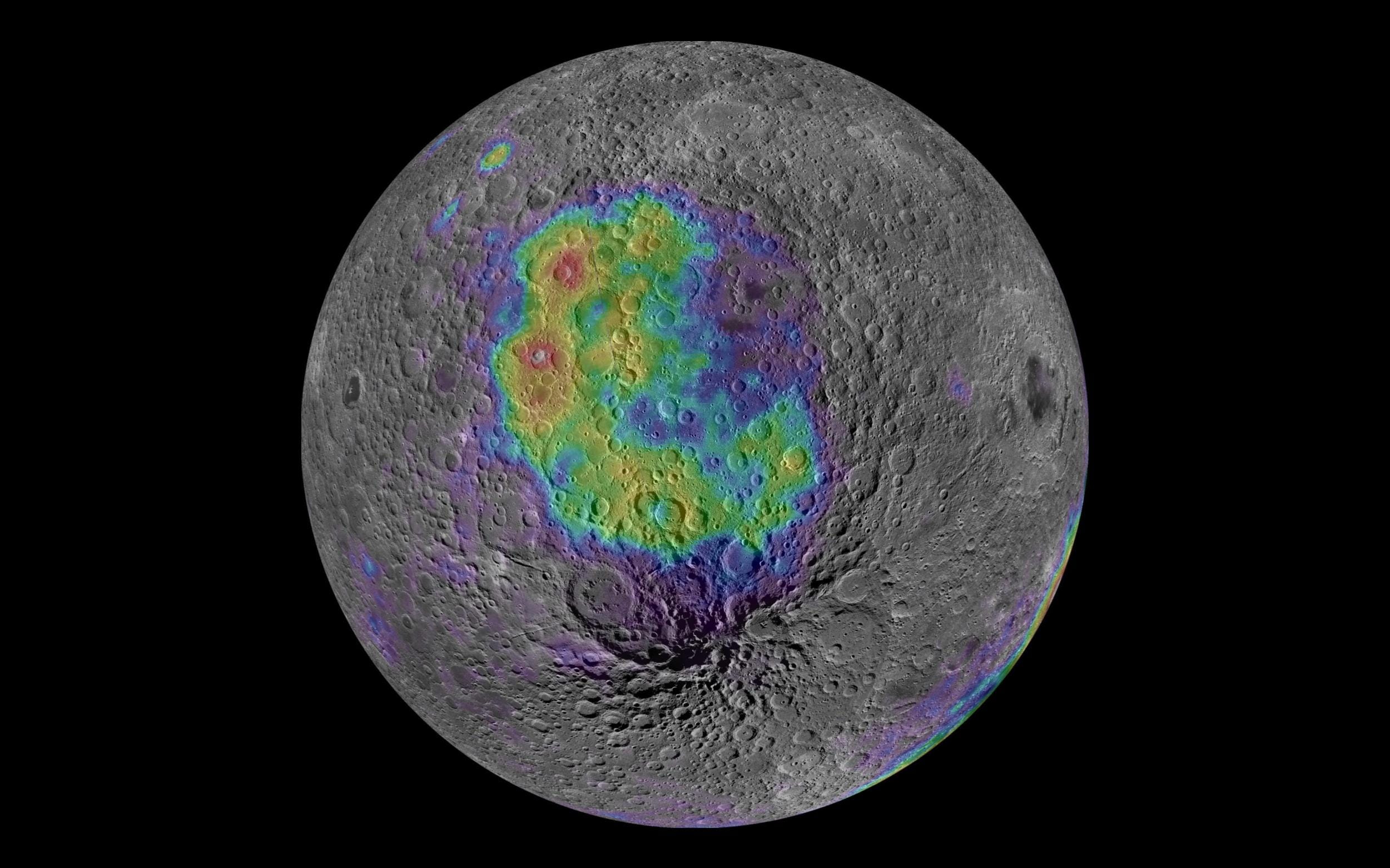Our two-faced Moon
Why is our Moon's farside so different from its nearside?
It wasn’t until 1959 that we saw our Moon’s farside for the first time. Because the Moon is tidally locked to Earth, humanity had only seen the nearside lunar hemisphere until that point. When Luna 3 and later spacecraft transmitted the first farside images, they revealed a far more cratered hemisphere which looked more akin to Mercury and Jupiter’s moon Callisto than the world we know.

The farside also lacked the Moon’s familiar dark splotches. Formed as a result of active volcanism over 3 billion years ago, it was anyone’s guess why dark lava plains cover about 31% of the nearside but only 1% of the farside.
Later observations deepened the dichotomy. Several lunar orbiters showed that farside rocks have a noticeably different chemical composition from nearside ones, meaning they formed differently. The twin NASA GRAIL orbiters launched in 2011 revealed that the farside’s crust is about 20 kilometers thicker on average than the nearside.

Scientists are especially interested in this lunar dichotomy because it’s tied to the Moon’s formation and evolution. Scientists think Earth and the Moon have a shared origin, formed when a Mars-sized object collided with the proto-Earth about 4.5 billion years ago. While active geological processes have erased hints of our planet’s makeup in those early years, the material from early Earth that formed the Moon remains largely preserved on our airless cosmic neighbor. This is especially true for the lunar farside where large regions haven’t been volcanically altered. Studying rocks here can give us insight into the early Earth while teaching us about the Moon’s history. Understanding what caused our Moon’s dichotomy will also allow us to better gauge why Mars is asymmetric too, as are some other solar system bodies.
The molten Moon
Earth may be responsible for lending the Moon’s nearside a thinner crust than its farside. When the Moon coalesced as a molten body from leftover debris of the collision between Earth and the Mars-sized object, it was about 15 times closer to us than it is today. It became tidally locked very soon after, when the Earth was still extremely hot from the force of the collision. The Moon’s nearside constantly faced early Earth’s fuming temperatures of 2,500 degrees Celsius, and thus remained molten for longer than the farside. Catalyzed by other factors such as tidal heating, it meant that farside magma was the first to crystallize into crust. Some crustal elements like aluminum and calcium continued vaporizing on the still molten nearside and condensing on the farside, making its crust thicker.

Scientists first thought that having a thinner nearside crust allowed magma in the Moon’s mantle to ascend and volcanically erupt on the surface more easily than the farside, explaining the nearside’s abundant volcanic plains. However, the farside South Pole-Aitken Basin (SPA)—the largest, deepest confirmed impact structure on the Moon—refutes that argument. The asteroid/cometary impact that created the 2,600-kilometer wide SPA carved deep into the lunar crust and even excavated some of the mantle. Later impacts on top of the basin carved further into the crust, making it very thin compared to the rest of the farside. And yet only 3-4% of the basin floor is covered in typical lava plains. Crustal thickness alone can’t explain the contrast in volcanic activity between the Moon’s hemispheres.
Scientists then thought that since the nearside crystallized slower than the farside, its crust and mantle may have accumulated more heat-producing and radioactive elements such as potassium and thorium. High-temperature experiments suggest that their presence would have lowered the melting temperatures of rocks in the nearside mantle, producing 4 to 13 times more magma under the nearside crust than the farside.
Simulations support this by showing that 4 billion years ago Oceanus Procellarum, the largest volcanic plain on the nearside, was hundreds of degrees hotter than the farside crust. Because of the temperature difference, nearside impacts produced deeper and larger basins than the farside, making the nearside crust even thinner and spilling more magma onto the surface.
Future missions
A sample return mission to the South Pole-Aitken Basin has been assessed as the highest priority for lunar exploration in the last two Planetary Decadal Surveys, a report produced every 10 years by the U.S. scientific community to guide future NASA missions. Sampling key areas within SPA to determine the ages and nature of farside crust and mantle, and comparing it to the nearside, will help us unravel the exact conditions in which the Moon formed and evolved. While China’s Chang’e 4 mission landed in a crater within SPA in 2019, the crater’s lava plains cover much of the ancient crust, and the mission’s instruments weren’t designed to probe the origin of the lunar dichotomy.
Another key target is Moscoviense, a major lava plain on the farside. Studying how its volcanic rocks differ from the nearside plains will not only inform scientists about the nearside-farside volcanic contrast but also lend insights into how the farside mantle formed differently than the nearside.
All of this future exploration will help us know how terrestrial planets like Earth and Mars form. Since scientists use the Moon as an age reference to determine how old or young features on planets and other solar system worlds are, establishing ages of farside features will also give us a firmer timeline of events across the solar system.

Several sample return and in-situ landing missions have been proposed over the decades to key places on the Moon’s farside. China’s Chang’e 6 spacecraft will collect samples from the Moon’s south pole in 2024, possibly from a region within SPA. Edit: Chang’e 6 fetched the samples, and its studies have deepened our understanding of the Moon’s evolution by anchoring key events.
NASA is sending a commercial lander as part of its CLPS program to the geologically pristine Schrödinger crater on the farside in 2025 to study the region’s internal structure and heat flow. NASA’s Artemis program aims to regularly send humans to the Moon’s south pole starting mid-decade. While the landings won’t be in SPA, scientists have identified some sites for the first few Artemis missions which host mantle and crustal material ejected by impacts on SPA. Much like Apollo, the pristine samples that Artemis missions will bring back to Earth could change how we look at our Moon.
Thanks to Daniel P. Moriarty for reviewing the article.
Originally published at The Planetary Society.
